The promise vs. the reality: Why your ads aren’t converting like they should
When your ad promises one thing and your landing page delivers another, conversions drop. See real examples of message mismatch – and what you can do to fix it.

You’ve probably seen it – or done it yourself. A brilliant ad that nails attention, emotion, and curiosity… only to send visitors to a landing page that says something completely different.
That gap between the promise (your ad) and the reality (your landing page) is one of the most significant conversion leaks in SaaS marketing.
It seems simple to fix—just “make sure they match,” right?
But maintaining consistent messaging across teams, campaigns, and channels is where most SaaS companies struggle. And that’s where conversions quietly die.
When the message doesn’t match
Let’s look at a few real examples of where the story breaks between ad and landing page.
Velory
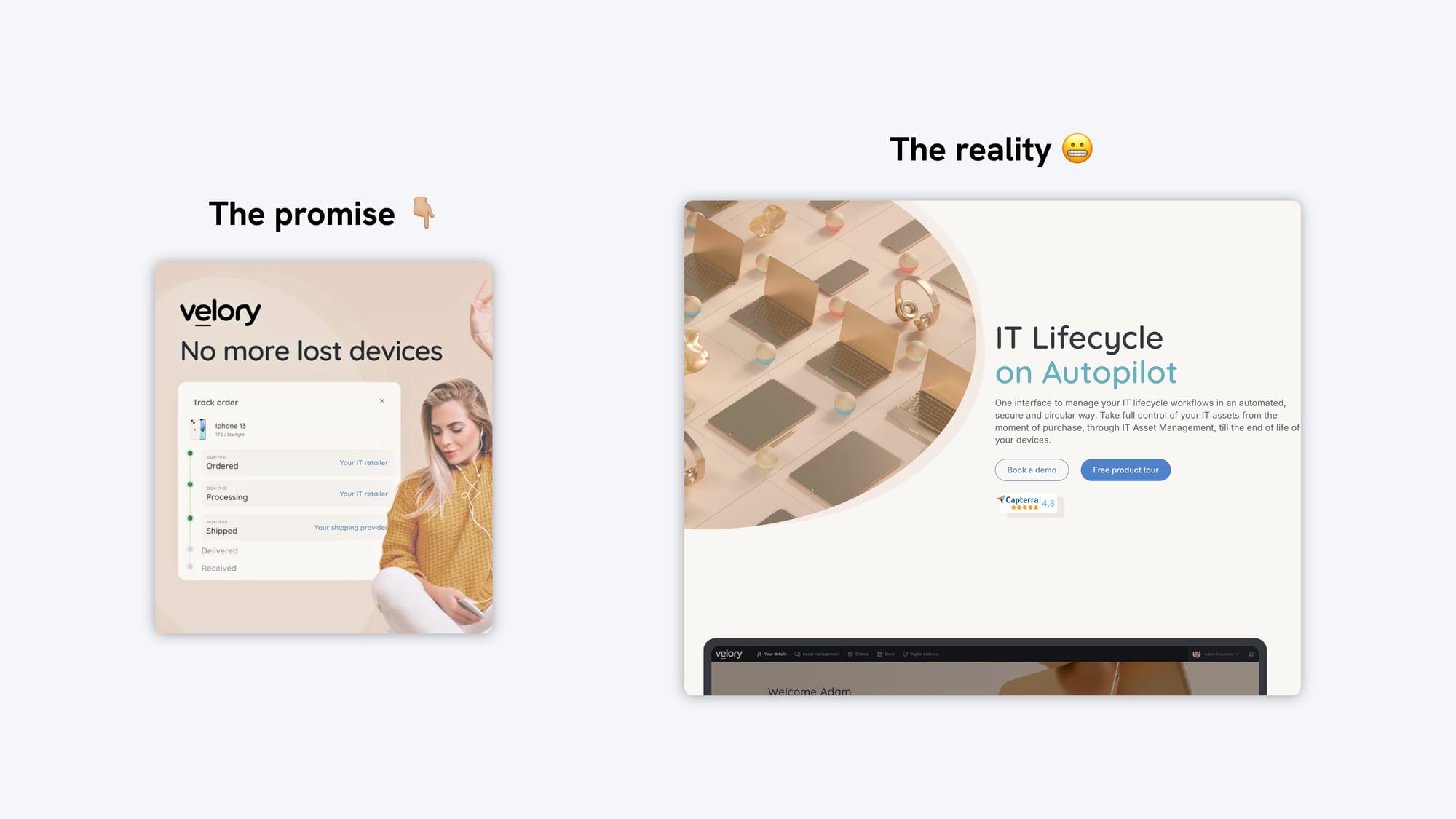
The promise: “No more lost devices.”
A clear, relatable problem – and an excellent hook for IT teams.
The reality: “IT Lifecycle on Autopilot.”
The page suddenly switches from a human pain point to product language. The emotional relevance disappears.
✅ Fix: Lead with the problem you solve. Keep the “no more lost devices” message consistent through the hero section. Clarity and continuity always prevail over cleverness.
Monday.com
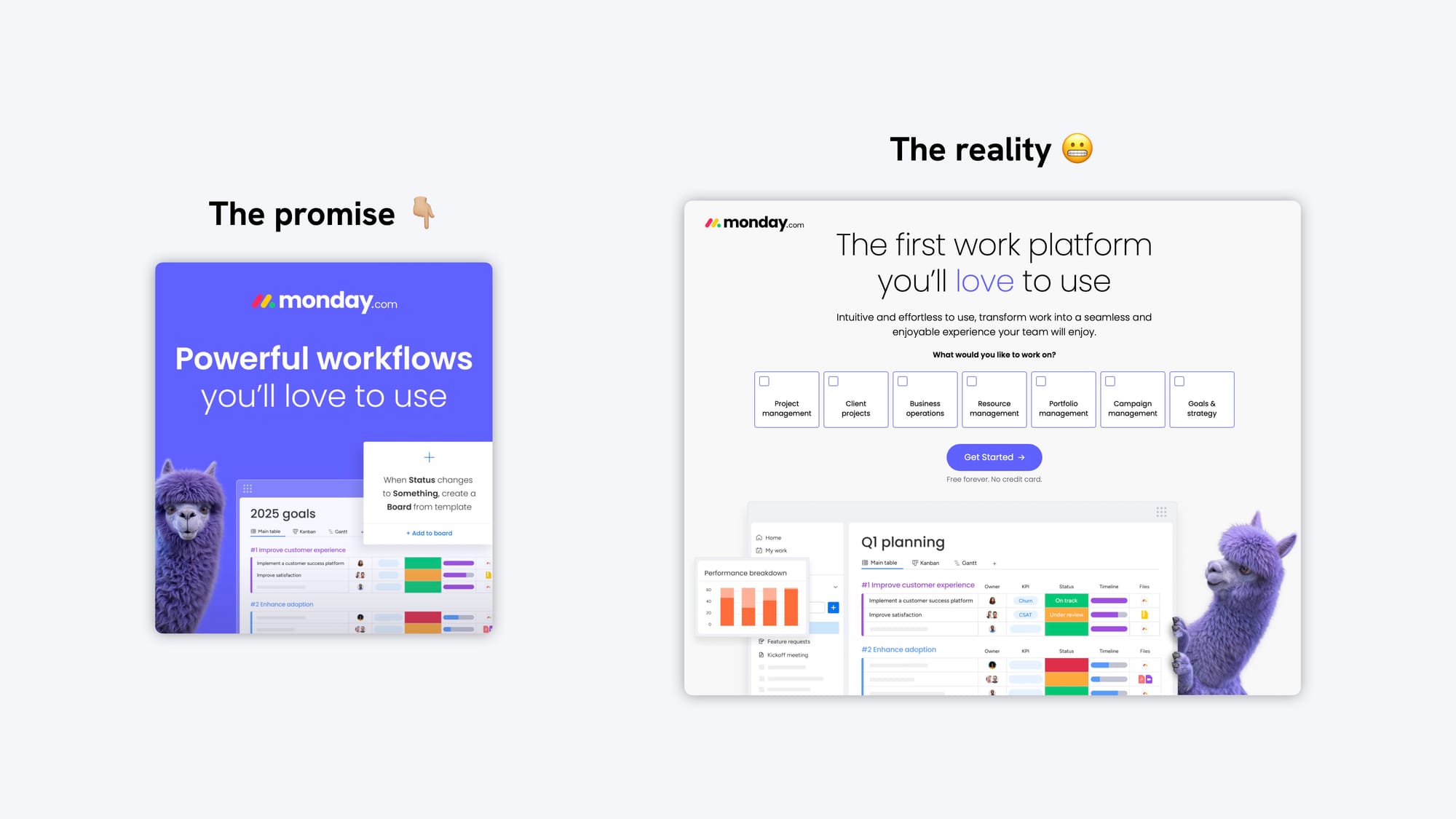
The promise: “Powerful workflows you’ll love to use.”
Strong benefit. Clear emotion.
The reality: “The first work platform you’ll love to use.”
The ad’s specificity is lost. The landing page zooms out to a generic claim that could apply to any tool.
✅ Fix: Keep the focus narrow. Ads that speak to workflows should land on a page that helps visitors visualize those workflows immediately – not broad messaging about the platform.
Fyxer AI
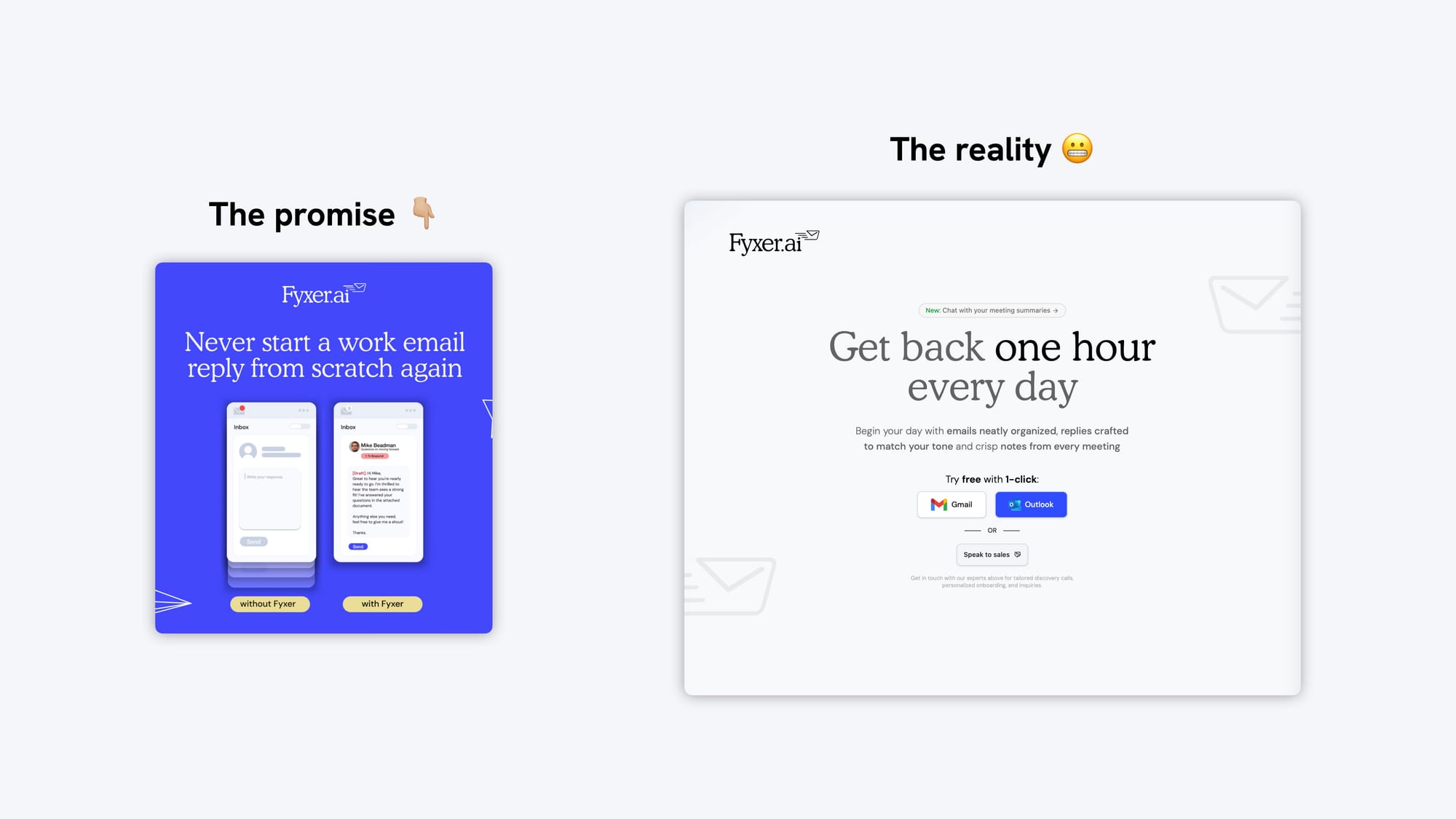
The promise: “Never start a work email reply from scratch again.”
A strong, relatable message with a clear benefit – instantly appealing to anyone drowning in email admin.
The reality: “Get back one hour every day.”
The landing page completely shifts focus. The benefit is now vague, the emotional pull is gone, and the visual contrast makes it feel like two different brands.
✅ Fix: Keep the same story from ad to landing page. Highlight the same problem and outcome – “Never start a work email from scratch again” – then connect it to the time savings. That’s how you keep momentum and build trust.
Zapier
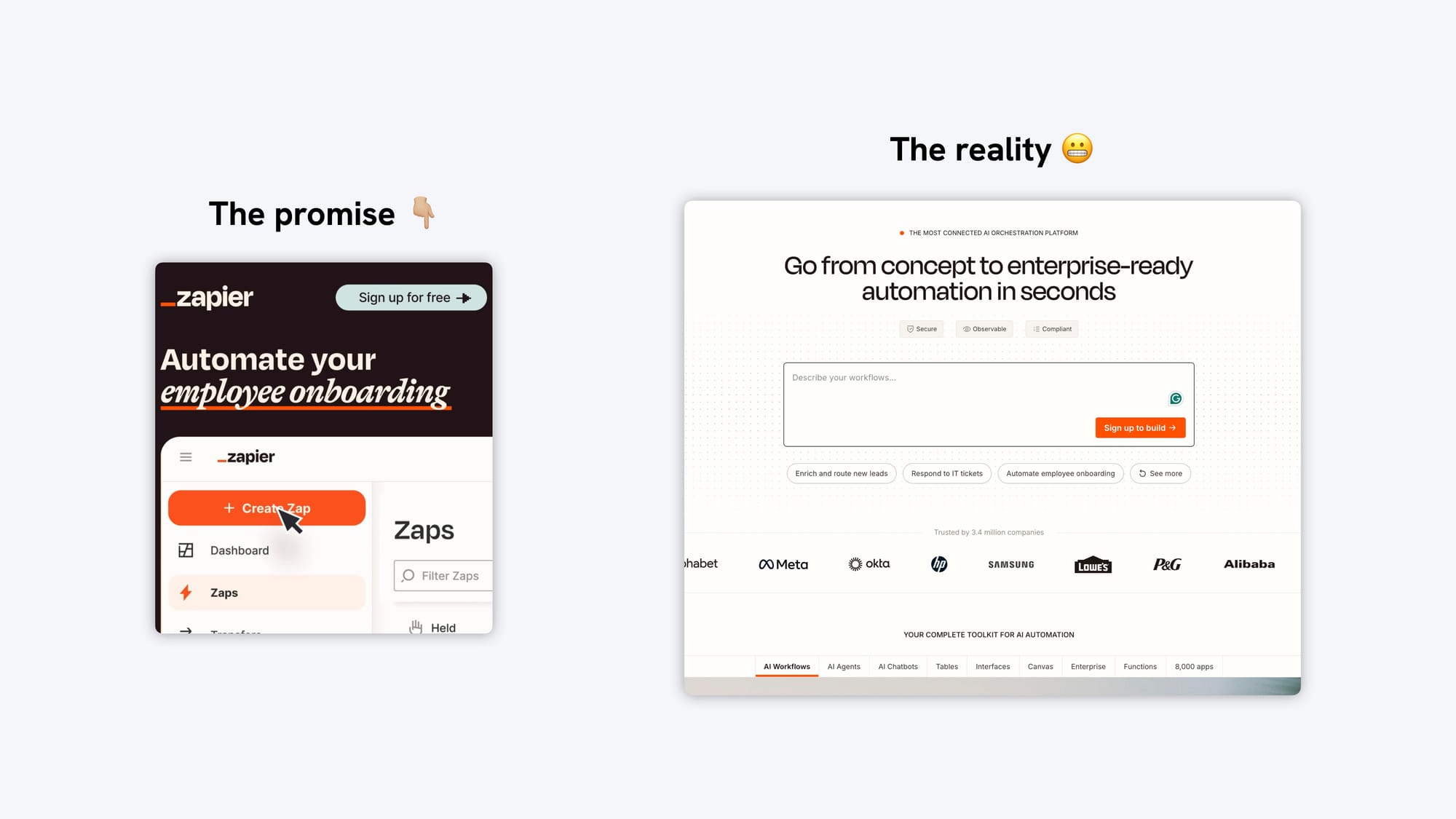
The promise: “Automate your employee onboarding.”
A strong, outcome-driven use case that instantly resonates.
The reality: “Go from concept to enterprise-ready automation in seconds.”
The focus shifts from solving a real problem to abstract positioning. The ad’s relevance evaporates on impact.
✅ Fix: Stay anchored to the specific use case. Build your landing experience around that single promise. Broad messaging might sound more strategic – but it rarely converts better.
When the message does match 🎉
Jace.ai
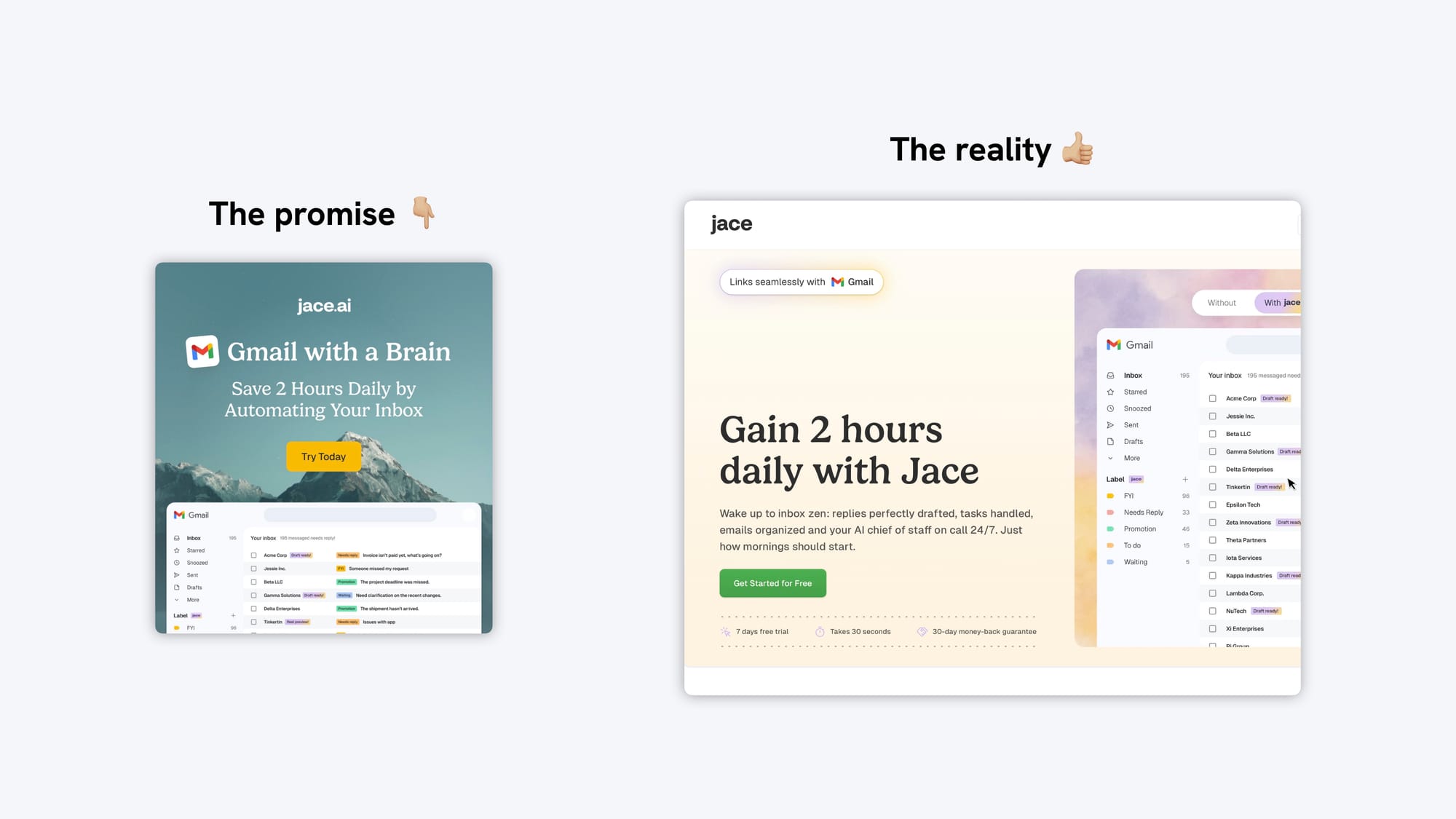
The promise: “Save 2 hours daily by automating your inbox.”
The reality: “Gain 2 hours daily with Jace.”
The ad and page align beautifully. The user journey feels seamless, and the story continues naturally from ad to action.
The only tweak? If the “2 hours” claim had been more prominent in the ad, this would’ve been near perfect.
The wrong kind of destination
Notably, almost all of these ads direct users to the company’s homepage. And that’s part of the problem.
Your homepage is designed for everyone – new visitors, investors, partners, and job seekers. A landing page is built for one purpose – to continue the conversation that started in your ad.
When you send ad traffic to a general-purpose page, the context is lost. The user has to work to find relevance. And when users have to think too much, they leave.
✅ Fix: Build a dedicated landing page for every campaign or core offer. Keep the message, visuals, and CTA aligned with the ad that brought users to the page.
Why message match is harder than it looks
Maintaining message consistency sounds easy – but at scale, it’s not. Most SaaS teams run multiple campaigns across Google, Meta, and LinkedIn. Each has different creative owners, different copywriters, and different goals.
Before long, ads promise one thing, landing pages claim another, and the user experience feels disjointed.
And because internal teams are so close to their own messaging, these disconnects often go unnoticed until conversion rates start to drop.
At ConversionLab, I’ve audited hundreds of SaaS campaigns – and message mismatch is one of the most expensive (and common) leaks I've seen.
The takeaway
Every click continues a story you started somewhere else.
When that story breaks, so does trust – and trust is what converts.
Do your campaigns suffer from message mismatch?
I’ll review your ad-to-landing experience and pinpoint what’s breaking trust – and how to address the issues.




